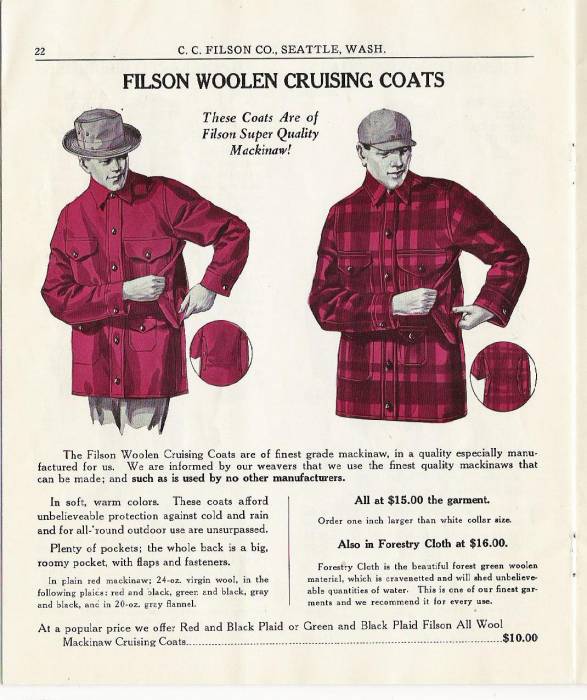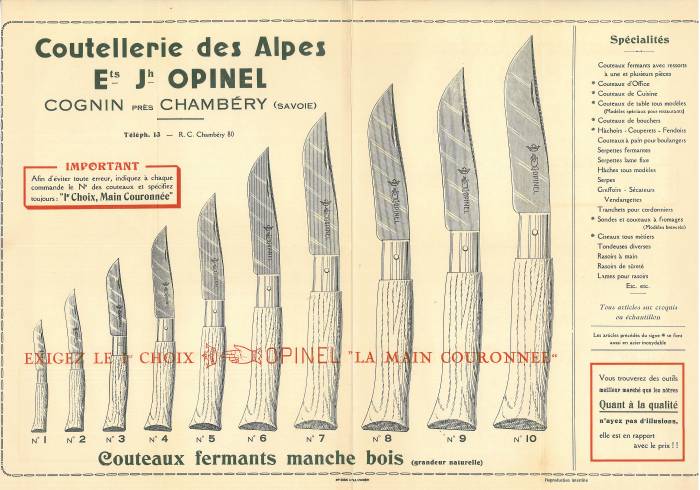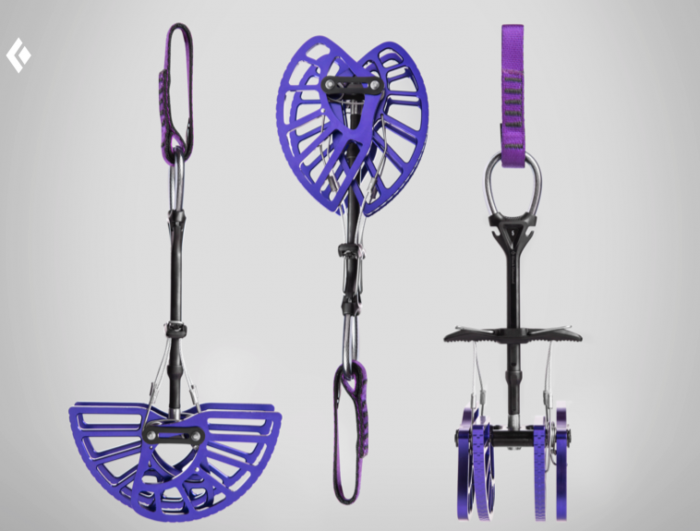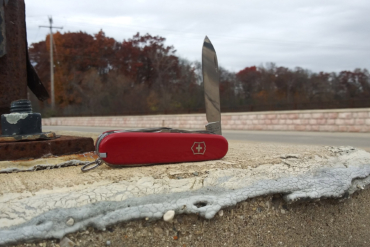Sometimes a piece of gear comes along that’s so good, messing with it will only make it worse.
As a daily user of all the latest and greatest tools and toys for getting outside, I tend to focus on what’s new. What makes it better? Where’s the innovation?
But what about the gear that doesn’t need innovating? During a recent winter campout, polar explorer Eric Larsen, one of the most extreme gear abusers I know, called my attention to the fact that some of his favorite gear, with which he trusts his life, really hasn’t changed that much in the last couple decades.
That got me thinking: How much of this immutable gear is out there? So I combed through all the stuff I use on a near daily basis, or at least every weekend, looking for the items I’ve taken for granted.
Top Outdoor Gear That Hasn’t Changed
“A great product does everything you expect and a little extra. More importantly, it stands up to abuse year after year,” Chris Barchet, a longtime outdoor product designer and gear tester, told me. Barchet now owns Fluid Product Development, a Seattle-based outdoor product development firm.
“Lots of products work great for a while but wear out too quickly, or worse, break,” he said. “To really build trust, the product needs have a long lifespan. Yes, my knife is a little beat up. But I know that every ding was a test that it passed, and the more dings it collects, the more I trust it.”
And while intangibles like trust give sentimental value, equally as important are a long-lasting product’s ecological impacts — or lack thereof.
“There’s a knowledge and intimacy that comes from using a piece of gear over and over and over for extended amounts of time — subtleties that you don’t get in a day or even a week,” Larsen told me. “Obviously, there is the durability, longevity issue; but equally important are the environmental implications of simply designing gear that is enduring.”
So the GearJunkie crew scratched our collective heads and compiled a short list of gear we know and use. These items have remained essentially the same — in some cases exactly the same — for decades.
Opinel Folding Knife
The classic Opinel No. 8 in carbon steel ($15) is essentially the same knife that Joseph Opinel designed in 1890 when he founded the company. Based in the French Alps, the Opinel family still owns the brand. It sports a novelty outdoorsy feel here in the U.S. But in France, it’s commonplace to see Opinel cutlery at every little hostel and restaurant.
The No. 8 blade is made from Swedish steel (see Hults Bruk, below), and the handle is sustainably harvested French beechwood. The classic Opinel blade style is an adopted Yatagan shape inspired by a traditional Turkish saber. Opinel grinds the blade to a unique convex profile that ensures strength and allows effective resharpening.
The last significant innovation with this knife came in 1955. Joseph’s son, Marcel, invented the Virobloc locking mechanism. The simple spinning ring effectively locks the blade open when in use and when closed. Among Opinel’s extensive lineup (I own at least four), the No. 8 is a versatile EDC knife, ideal for camp use, with a 3.35-inch blade.
Zippo Lighter
The current generation may be less familiar with the classic, liquid-butane-fueled, flip-top Zippo lighters than even my generation of 40-somethings, but especially less so than generations past. Zippo goes back in notoriety as far as WWII when the company shut down consumer production and only made lighters for the U.S. military.
The Zippo lighter was born in 1932 with one product: a lighter based on a windproof Australian design of the time. That design required two hands to open and light. But founder George G. Blaisdell wanted improvements to make the device more durable and operable with one hand. And once he had it, he sought a catchy name. He liked the sound of the word “zipper,” another newfangled invention of the time, and he thought “Zippo” sounded modern.
By the mid-1950s each lighter received a date code stamp on the bottom, adding to their collectability. Zippo has released many variations in color and material: chrome versus brass, branded editions, creative skins (think Jo Camel), etc. But they’re all the exact same simple, windproof, and reliable design. Smoke ‘em if you got ‘em.
Filson Mackinaw Cruiser Jacket
The iconic Filson Mackinaw Cruiser jacket simply hasn’t changed since its first patent in 1914 — all the way down to its front buttons and nine utilitarian pockets, including an oversized, dual-entry map pocket across the back panel.
It’s still made of 100 percent Mackinaw Wool for natural water repellency, breathability, and insulating warmth in all types of weather. As functional and classically stylish as it was in the 1920s, this foul-weather jacket is ideal for working around the homestead, glamping, hunting, and daily wear. Filson explicitly designed the Mackinaw to actually hand down to your kids, because it will probably never change.
Filson was born in 1897. It has always catered to a gear-abusing crowd of hunters, fishers, field engineers, mariners, and other explorer types. The brand carries fame for its made-in-the-USA fabrics, like heavyweight Tin Cloth and Mackinaw Wool.
Hults Bruk Tarnaby Hatchet
The Hults Bruk Yankee pattern axe, as seen in the Tarnaby, was in production during the late 1800s. It remains the least changed of all Hults Bruk knives and axes. This same Yankee pattern and method of forging is still used for the standard line of Hults Bruk axes today. The materials are also nearly the same: wooden handles and steel axe heads.
The Hults Bruk Turpentine head pattern has been in the HB line since the 1860s but was slightly modified over the years. Only the lugs (the part of the axe that connects the head to the handle) have been reshaped from a triangle to a circle. For the uninitiated, this blog offers an insightful rundown on the history of axehead designs.
HB’s steel has always been produced in Sweden. Before 1950, the axes contained two different kinds of steel: a harder steel for the axehead and a softer steel for the bit (the front blade part of the head that you sharpen). However, since then, HB forges all of its axes from a single piece of steel, greatly improving quality and strength.
The company itself dates back to 1697, and its knives and axes remain coveted by traditionalists worldwide. The all-purpose Tarnaby hatchet is small enough to fit in a pack or on a belt. It’s the ideal size for basic camp tasks like cutting kindling, hammering tent stakes, and light clearing work.
The 1.25-pound axehead has a long, narrow profile with a rounded edge for cutting across grains. And the 15-inch American hickory handle, a hardwood that has been used on the axe since at least the 1950s, is light enough for precision one-handed use when chopping small firewood or carving.
Kinco Gloves
While the Kinco 1927KW might not be the oldest piece of unchanged gear, but there’s almost no more iconic product in the ski bum life cycle. The Kinco brand of affordable but high-quality workwear gloves was born in 1975. According to Kinco president and owner Travis Kindler, its launch into ski gloves in the mid-1980s didn’t go so well due to the vagaries of color and fashion trends in the industry.
But a certain insulated pigskin, knit-wrist glove stuck around thanks to its inimitable trademark railroad stripe polyester on the back and classically simple construction with very few seams. Unlike cow or deer hide, pigskin leather dries soft after getting wet. It also maintains its shape and is slightly breathable. So although there’s a cult following that likes to waterproof these gloves at home, you don’t necessarily have to.
Kindler told me many brands have tried to replicate this iconic glove design, but Kinco fights fiercely to protect it, down to the style number and the color sequence in its stripe design. It’s like Burberry, only for lift mechanics and oil field workers. Today, Kinco sells thousands of pairs each year in more than 3,000 outdoor shops, hardware stores, feed stores, and ski shops across the country
Stormy Kromer Original Cap
I’m not saying this is going to be the right hat for everyone. But for that trendy, upper-Midwest lumbersexual look with undisputed functionality and warmth, this could be the last lid you ever buy.
A railroad worker by trade, Kromer needed a rugged cap that wouldn’t blow off his head on blustery days in Kaukauna, Wisconsin. And in 1903, both the Stormy Kromer company launched with the hat.
The company has changed hands a few times. But it still makes the hats in the U.S., now in Michigan, with globally sourced materials. Yet it has made no other real changes in design or materials: six panels, pulldown ear band, cotton flannel lining, and wool shell. Of course, today the hats come with various blends of nylon to achieve more colors than the original Partridge plaid. Fan-hat-ics laud them as perfectly fitted, rich, warm, and ageless.
Black Diamond Camalot
Chouinard Camalots were first released in 1987. As a testament to the product, many people are still using the original Camalot from those first years of U.S. production. In fact, the Camalot wasn’t updated until 2004, after Black Diamond Equipment acquired Chouinard. It will receive another update in spring 2019 — the first complete redesign since its invention.
As many may know, “cams” completely changed the game of multipitch trad climbing. Made from aluminum alloy, they’re available in 10 sizes for about $75 apiece. They have always been color-coded. Each has the signature double-axle design for greater range and consistent camming angle.
Leatherman Wave Multitool
After eight years in R&D, the original Leatherman PST (Pocket Survival Tool) was patented in 1983 and comprised 13 tools in a 5-ounce, 4-inch package. After its first sale of 500 units to Cabela’s, Leatherman went on to sell 30,000 tools in its first year of business. It sold a million tools over the next decade.
However, the PST is only available now as a beautiful heritage re-release for the brand’s 35th anniversary this year. But Leatherman’s most popular tool of all time, the Wave, launched in 1998, is still available today essentially in its original form. The only change is the addition of a replaceable wire cutter.
It was the first Leatherman that allowed users to access the knife blade without having to open the pliers and had a one-handed opening. These are both massive leaps in the tool’s convenience.
Still the best-selling style, the Wave receives praise on a daily basis. Everyone — backpackers, fishers, handymen, survivalists, law enforcement — put it through the paces daily. That’s not to say there haven’t been upgrades in materials and functionality, but the original design and 18 tools found on the 1998 original remain the same.
Victorinox Swiss Army Soldier
Even though this list already has a lot of knives and tools, I felt I’d be remiss without the Swiss Army Knife. Swiss soldiers have carried the Victorinox Swiss Army “Soldier Standard Issue” since 1891. However, the brand says the product has evolved over the last century to become better, stronger, lighter, and more functional, although this particular version is more than a decade old.
While the Swiss Army tradition has been evolving for over 100 years, Victorinox still makes the tools in-country from Swiss stainless steel. The latest version, the Swiss Soldier’s Knife 08, has been the standard issue since 2009. It features a “new” ergonomic, dual-density handle and a serrated locking blade that opens with the flick of the thumb and locks in place for rugged use. Other tools on the Soldier include a Phillips screwdriver, wire stripper, wood saw, and bottle opener, all under a lifetime warranty.
MSR Gear
Believe it or not, Mountain Safety Research was originally born as a newsletter and mail order concept in 1969. For the first edition, MSR asked subscribers to donate $3 to cover printing and mailing costs. It offered a fiberglass ice axe reinforcement kit, snow flukes, a very interesting auto belay device, and a snow saw. And it had detailed instructions on how to build an igloo.

A renowned safety expert and gear designer, founder Larry Penberthy wanted to make the best information and equipment widely available for climbers. The company carries on this mission to this day.
Impressively, MSR claims the invention of many key innovations in outdoor sports: heat reflectors and windscreens on stoves (1973), one of the first commercial bicycle helmets (1974), underarm zips in a parka (1976), the first consumer-facing product (a headlamp) using lithium batteries (1977), the WaterWorks portable pump filter (1990), and I-beam carabiners (1993). And the list continues today.
And today, some of its wares remain largely unchanged. Larsen said he got his first MSR Whisperlite Stove in 1984, and its basic form and function are the same. For perspective, Larsen noted, “In 1984, I was using a rotary phone, an external frame backpack, and wearing cotton long underwear.”
The Snow Picket has also been in the line for more than 20 years and is one of the simplest and most unchanged pieces of gear out there. Formerly called the Coyote Snow Stake, this picket received a redesign in 1983, 13 years after its launch. It added a T-shaped cross-section that exposed more surface area to the snow.
While the changes added more material to high-stress areas to make them 50 percent stiffer, it stayed the same weight and remained almost identical.
Buck Knives Model 119
Another knife, yes, but not just any knife: The 119 is American history. Buck Knives, born in 1902, began making the Model 119 after Pearl Harbor in 1942, when the U.S. government requested donations of fixed-blade knives to help arm soldiers quickly departing for World War II. The current Black Model 119 Special (other than anniversary markings in 2017) hasn’t changed since the 1980s.
Hoyt Buck initially handcrafted each knife from used file blades and lucite in various colors. Up until 1945, the first fixed blades came in multicolored stacked lucite. But later, the blades transitioned into the highly recognizable solid blue, red, green, or black handles, each with a single white lucite line in the middle.
In 2017, the 119 celebrated its 75th anniversary. That year, Buck Knives released a limited-edition box set with each knife featuring the handle material, blade steel, and construction from a specific time period in the knife’s history.























